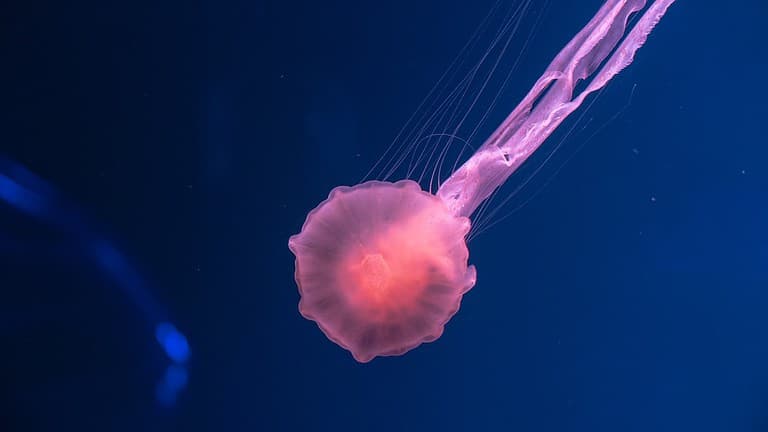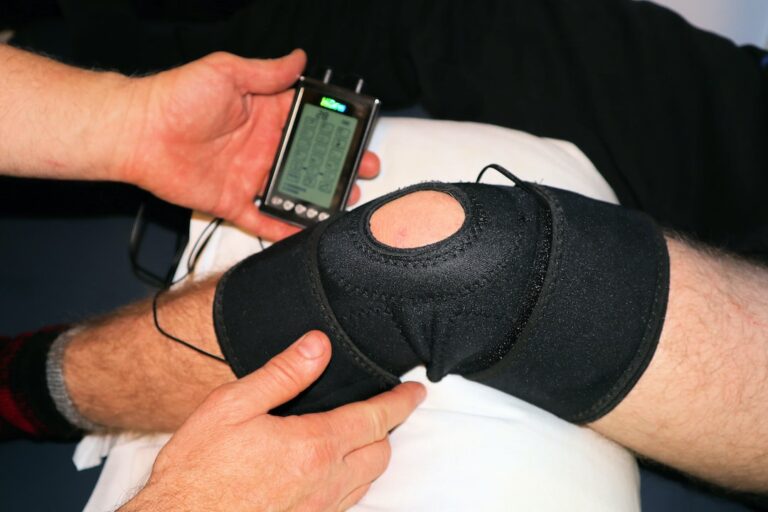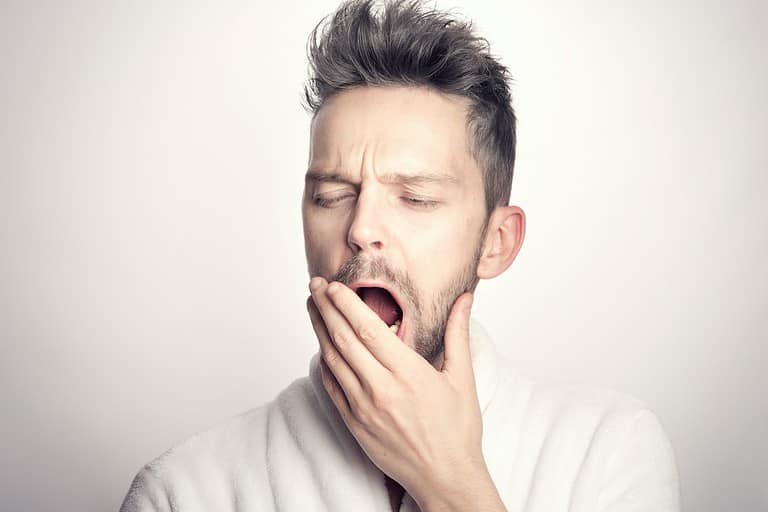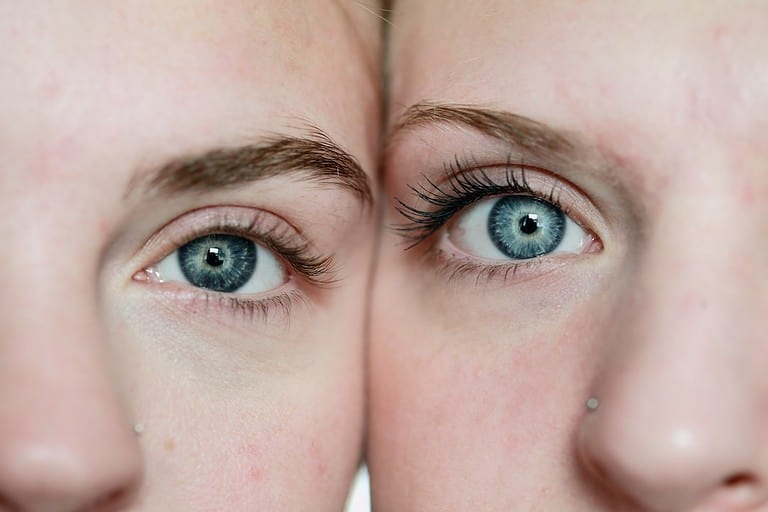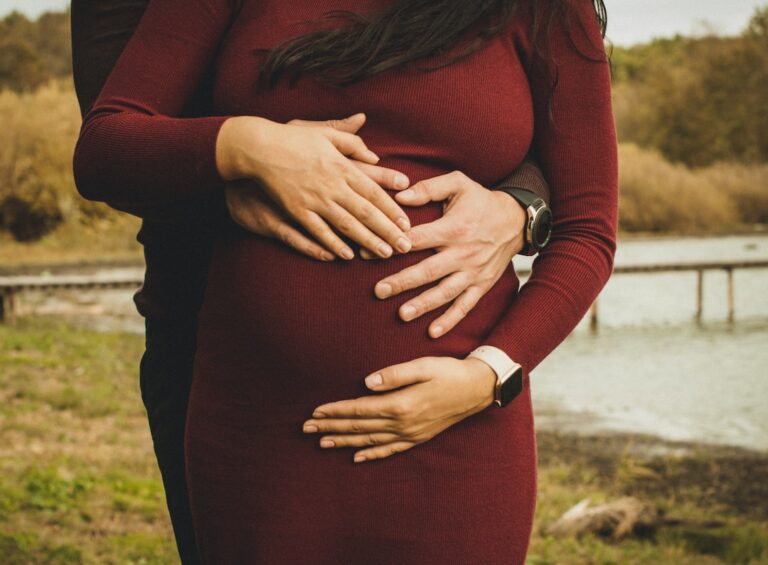How to Speed Up Healing From Cryotherapy: A Practical Guide
Cryotherapy, a widely used treatment for various medical issues, is also being employed to expedite healing from injuries. The process of cryotherapy involves exposing the body to extremely cold temperatures in order to reduce inflammation and promote faster recovery times. After the procedure, you should learn how to speed up healing from cryotherapy.
Before engaging in cryotherapy, it is important to take certain precautions to maximize the benefits and minimize any risks associated with the procedure.
In this blog post, we’ll explore how to speed up healing from cryotherapy by understanding what it entails, preparing properly for your sessions, speeding up your recovery time through targeted treatments, and seeking professional help if needed. So let’s dive into how to speed up healing from cryotherapy.
Table of Contents
Understanding Cryotherapy
Cryotherapy is a therapeutic practice that involves exposing the body to very low temperatures. It has been used for centuries as an alternative treatment for a variety of ailments, including pain relief and skin conditions. A range of techniques, from liquid nitrogen-based cryotherapy to the utilization of ice packs or cold baths, are employed for reducing body temperature in order to alleviate certain ailments.
What is Cryotherapy? Cryotherapy involves entering a chamber with nitrogen gas cooled to frigid temperatures, ranging from -200°F and -320°F (-130°C and -196°C). This extreme temperature triggers physiological responses in your body which can have positive effects on overall health and wellness. Sessions usually last two to three minutes, although some people may require longer sessions depending on their condition or goals.
The potential gains of body cryotherapy may be manifold, such as improved blood flow, increased vigor, reduced soreness and swelling, stronger immunity, better sleep quality, reduced stress levels, and faster recuperation time from wounds or operations. In addition to these physical benefits, many people report feeling more energized after each session due to endorphin release caused by the cold exposure.
Prior to beginning any cryo-therapy regimen, it is essential to seek medical advice from your doctor in order for them to evaluate if the treatment is suitable for you given your particular health history and needs.
Cryotherapy can be a beneficial way to boost health and well-being, but it is essential to consider the possible dangers before undergoing therapy. With proper preparation and guidance, you can maximize your experience with cryotherapy while minimizing potential side effects. To maximize the benefits of cryotherapy, it is important to adequately prepare for your session.
Preparing for Cryotherapy
Cryotherapy involves utilizing intensely cold temperatures to alleviate pain, swelling, and other medical conditions. Before undergoing cryotherapy, it’s important to make sure you are properly prepared.
Choosing the Right Facility
It’s important to do your research before selecting a facility for cryotherapy. Make sure the clinic is certified and has experienced professionals who can provide quality care and advice. Ask about their safety protocols and if they offer any additional services such as massage or physical therapy that could help with recovery after treatment.
Prior to beginning cryotherapy treatments, it is prudent to adhere to certain guidelines in order to ensure a safe procedure. Ensure your body is optimally hydrated by drinking plenty of water; abstain from consuming caffeine or alcohol on the day of treatment; wear clothing that does not constrict circulation; remove any jewelry located near the affected area prior to treatment; consult with your doctor regarding any existing health conditions or medications which could influence the efficacy of therapy session.
After each session, it is important to follow certain post-treatment guidelines in order for the best results from cryotherapy sessions. Rest afterward for at least an hour following each session, as this will allow your body the time needed for a proper healing process. Apply ice packs periodically throughout the day if necessary, as this helps reduce swelling and discomfort associated with treated areas.
Keep warm by wearing layers when going outside after treatments, as cold weather can cause further irritation and discomfort if exposed too soon after sessions have ended. Stay hydrated with a variety of beverages, like water and electrolyte drinks; this helps hasten toxin elimination while boosting energy levels during the healing period.
To maximize effectiveness and reduce risks, it is essential to prepare for cryotherapy prior to treatment. By taking the necessary steps beforehand, you can make sure that cryotherapy is both safe and advantageous. With proper preparation out of the way, it’s time to look at how we can speed up healing from cryotherapy.
Speeding Up Healing from Cryotherapy
Allow your body to recuperate after cryotherapy by taking a break and indulging in restorative activities. Resting and taking time for relaxation can help speed up the healing process. You may also wish to try activities such as yoga, tai chi, or mindfulness meditation at home to aid in relaxation and recovery.
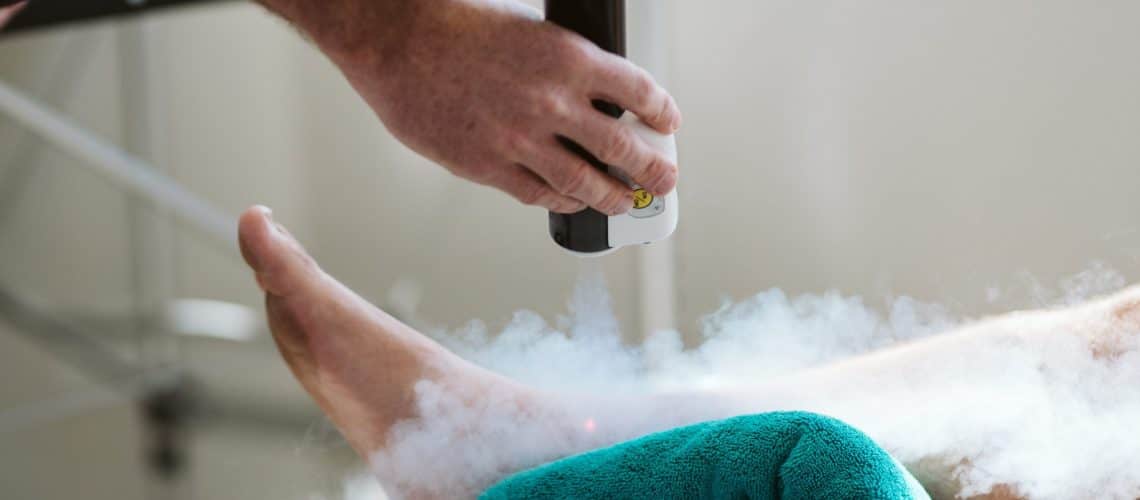
You could also try relaxation techniques such as mindfulness meditation, deep breathing exercises, or listening to calming music for optimal rest. Taking breaks throughout the day and getting enough sleep are key components in helping you recover quickly from cryotherapy treatments.
Nutrition and Hydration Tips
Eating healthy meals with plenty of fruits, vegetables, lean proteins, whole grains, nuts, and seeds will provide essential nutrients needed for recovery after cryotherapy sessions. It’s also important to stay hydrated by drinking lots of water throughout the day; aim for 8-10 glasses per day if possible. Avoid sugary drinks that contain empty calories as these won’t help your body recover any faster from cryotherapy treatments.
Exercise should be kept light during recovery from cryotherapy treatments so as not to overwork your body while it is still healing itself. Gentle stretching exercises such as Pilates or Tai Chi are good options since they don’t require too much effort but still get some blood flowing through your muscles which helps them relax after treatment sessions have been completed. Walking around outdoors is another great way to keep active without putting too much strain on yourself; just make sure you take regular breaks when necessary.
This guide outlines strategies that can aid in faster healing from cryotherapy. Nonetheless, it is imperative to be cognizant of any issues that could arise during the healing process in order to ensure prompt and effective treatment by a medical expert if needed.
Seeking Professional Help for Complications from Cryotherapy
Awareness of possible issues stemming from cryotherapy is essential, and when any arise, it’s wise to consult a professional. Identifying signs of complications can be tricky, but there are some common symptoms that may indicate a need for medical attention. Persistent or worsening symptoms such as pain, swelling, redness, fever/chills, dizziness/lightheadedness, and nausea/vomiting should be monitored for and medical attention sought if they persist.
If any of these warning signs linger following treatment, medical attention should be sought promptly.
When seeking medical attention for complications from cryotherapy it is best to go straight away if you experience any of the above-mentioned symptoms. It is prudent to consult your physician even if no problems initially arise after cryotherapy, as this allows them to track any developments that could occur over time and provide suitable advice.
Treatment for problems from cryotherapy could vary but may include antibiotics if an infection is present, anti-inflammatories to reduce swelling, and pain relief like paracetamol or ibuprofen. It’s always best to be cautious and seek medical advice if complications from cryotherapy arise, as surgery could be needed in more extreme situations.
FAQs in Relation to How to Speed Up Healing From Cryotherapy
What should you avoid after cryotherapy?
It is important to avoid certain activities after cryotherapy, as they can interfere with the healing process. These include exercising strenuously or engaging in any activity that causes excessive sweating for at least 24 hours. Additionally, if you want a faster healing process, you should avoid hot baths and showers for 48-72 hours following treatment.
You are advised to refrain from bathing or showering until the treated area has cooled to its normal temperature. For the initial 72 hours after treatment, direct sunlight should be evaded as the area of application will be more delicate during this period.
How long does it take for skin to heal after cryotherapy?
Cryotherapy is a method of medical therapy that utilizes extremely low temperatures to target certain body areas. Generally, the skin will heal within two to three days after cryotherapy, depending on the severity and size of the treated area. During the healing process, it is essential to maintain hygiene and hydration of the treated region for expedited recovery.
Individuals who have had cryotherapy may require antibiotics or other medicines prescribed by a physician to stop the infection and ward off further irritation while healing.
How do you prevent scarring after cryotherapy?
To prevent scarring after cryotherapy, it is important to keep the treated area clean and dry. Applying a thin layer of an antibiotic ointment or cream multiple times daily for no less than one week after the procedure is suggested to prevent scarring. Additionally, keeping the area covered with gauze or bandages can help reduce friction and irritation that could lead to scarring.
If redness persists beyond two days, it is essential to consult a physician immediately to avoid any further harm from potential infection.
How do I take care of my skin after liquid nitrogen?
It is important to take proper care of your skin after liquid nitrogen treatment. Immediately following the procedure, you should apply a thin layer of petroleum jelly or Aquaphor Healing Ointment to the treated area and keep it covered with gauze for several days. Additionally, avoid sun exposure until healed and use sunscreen when outdoors. You may also need to cleanse gently with mild soap and water twice daily.
Avoid scrubbing or rubbing the area as this can irritate the skin further. If any blistering occurs, do not pop them; instead, cover them loosely with sterile bandages if needed.
Lastly, contact your doctor if redness persists beyond 3-4 days or if other signs of infection appear such as swelling, warmth in affected areas, etc.
Conclusion
Cryotherapy is a potent way to facilitate healing, but it can be hazardous if not conducted with due care. It’s important to understand the risks and benefits of cryotherapy before undergoing treatment, as well as take steps to speed up healing from cryotherapy after treatment. If any issues or worries arise during the recovery period, it is essential to get expert help right away in order to make sure that cryotherapy treatment yields positive outcomes.
With proper preparation and understanding of the procedure, you should be able to enjoy all the positive effects that come with successful cryotherapy treatments while minimizing potential side effects.
If you’re looking for how to speed up healing from cryotherapy, Smart Living Now provides comprehensive resources that will help the modern family be healthier and more independent. Take advantage of our expertise today and start living smarter now!



